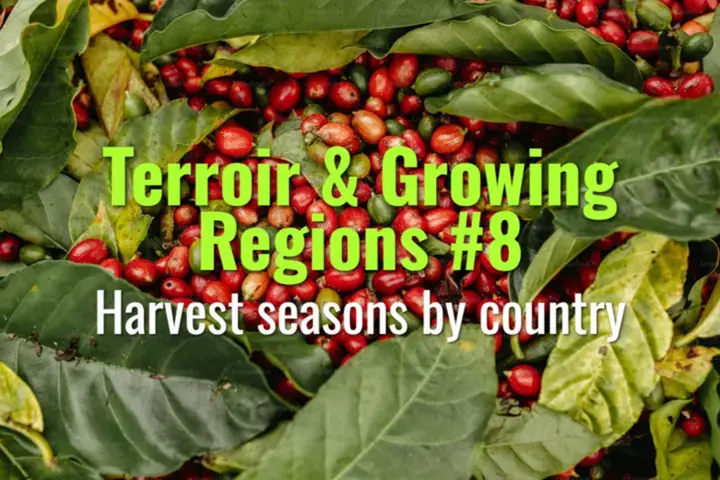Harvest seasons by country
This topic explains the timing of coffee harvest seasons around the world, how they differ by hemisphere and region, and why harvest periods matter for freshness, supply, and global trade.
- Coffee Basics Nerds
- 2 min read
Article 8 of 12 in Terroir & Growing Regions/

Factors Influencing Harvest Seasons
- Latitude & hemisphere: Determines whether harvest falls in the first or second half of the year.
- Altitude & microclimate: Higher elevations ripen later, extending harvest windows.
- Rainfall cycles: Flowering and ripening align with wet/dry seasons.
General Hemispheric Patterns
- Northern Hemisphere (Central America, parts of Africa, Asia): Main harvest from October to March.
- Southern Hemisphere (South America, parts of Africa): Main harvest from April to September.
Country Examples
- Brazil: May–September (largest harvest globally, mechanized on large estates).
- Colombia: Two harvests—main (mitaca) Sept–Dec, secondary April–June.
- Ethiopia: October–January, manual picking of heirloom varieties.
- Kenya: Main harvest Nov–Dec; secondary (fly crop) June–July.
- Guatemala & Central America: November–March, highland farms extend into April.
- Mexico: November–March, with peak Dec–Feb.
- Vietnam: October–January (mainly Robusta, strip harvested).
- Indonesia (Sumatra): October–March; Java can vary regionally.
- Yemen: October–February, traditional hand-picking.
- Peru: April–September, longer season due to altitude variation.
- Tanzania: June–October (Arabica in highlands, Robusta lower).
Importance of Harvest Timing
- Quality: Selective picking at peak ripeness is crucial for specialty-grade coffee.
- Market supply: Harvest cycles shape global trade flows and availability of fresh crop coffee.
- Freshness: Roasters often highlight “crop year” to indicate recent harvest.
Climate Change Impact
- Altered rainfall patterns shift harvest timing.
- Some countries experience more irregular or extended harvests, complicating logistics.
Lasting Importance
Harvest seasons define the global rhythm of coffee production and trade. Knowing when each country harvests allows roasters to plan sourcing and ensures consumers enjoy coffee at peak freshness.